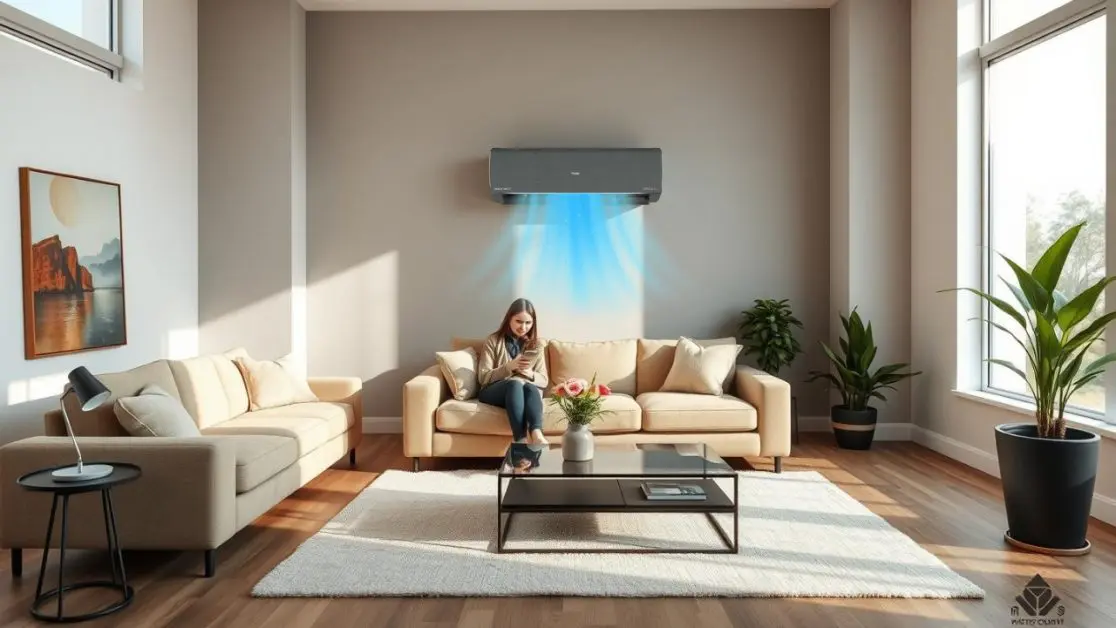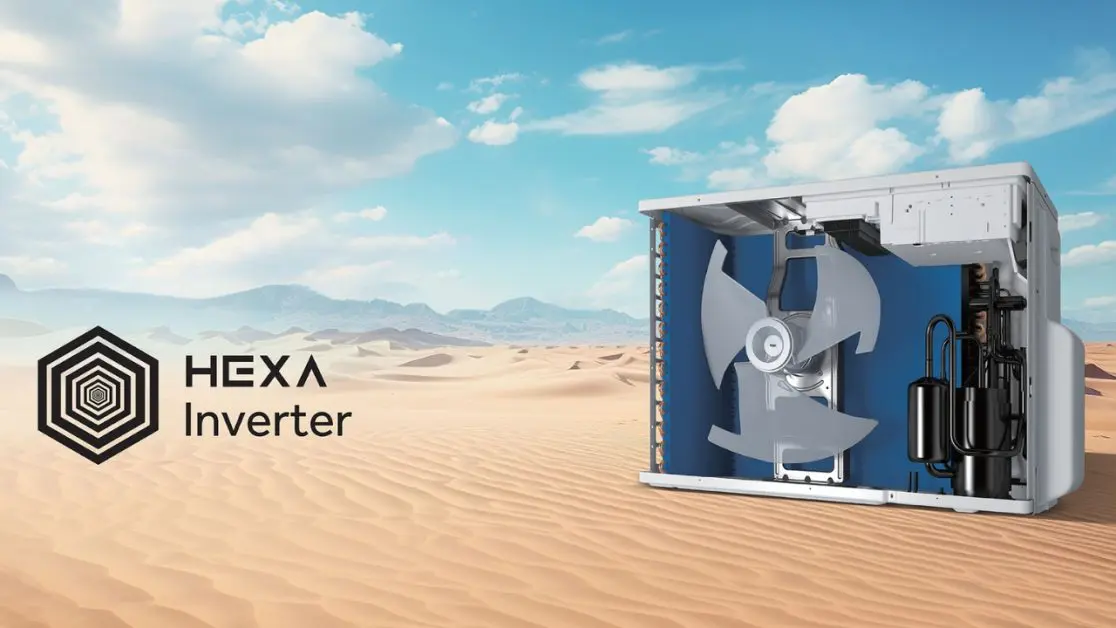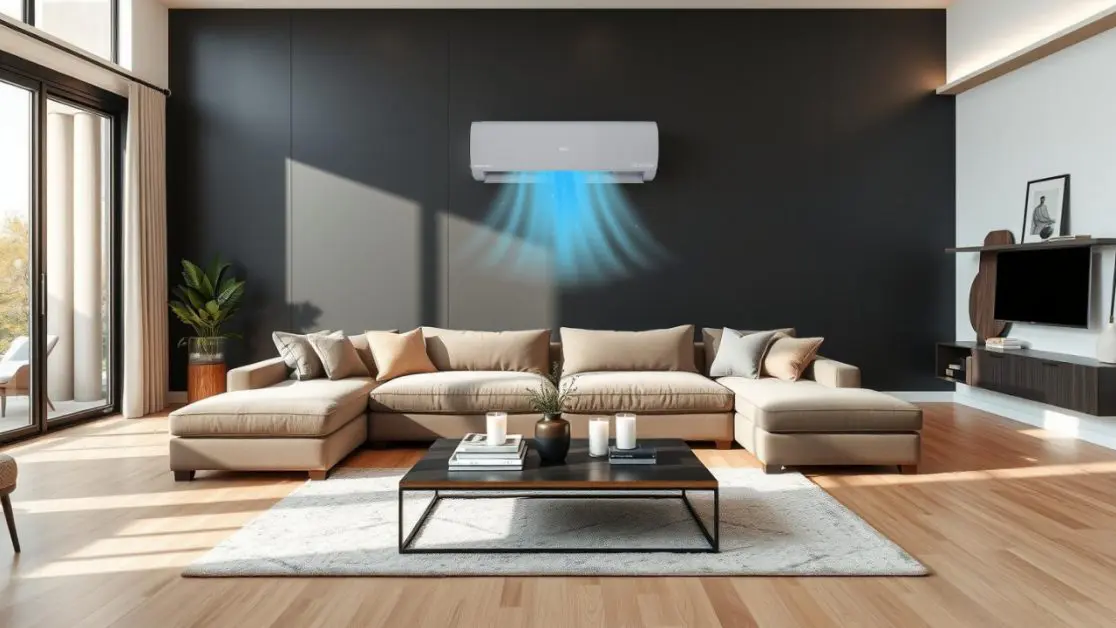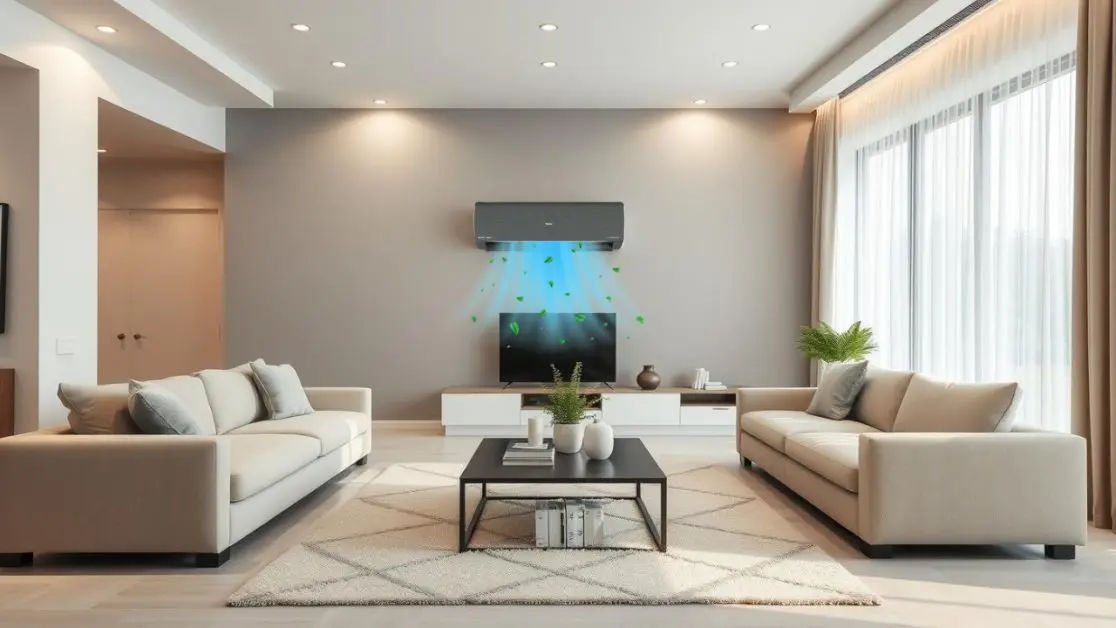Summer is now at an all-time high around the globe, and India is no exception. Because of this, the demand for cooling appliances in the region has surged significantly, leading previously obtained temperature records to be bent.
This coincides with a troubling paradox, the level of comfort received from ACs comes with significant costs to the environment. The majority of air-cooling systems draw massive amounts of power while also utilizing Greenland-depleting resources.
But new technology is changing the debate.
The transition from traditional air conditioning units to AI-based smart cooling systems is a lot more than a technology enhancement, it is a solution to environmental issues.
The Role of Smart ACs in Fighting Climate Change

Greenhouse gases are the leading cause of global warming and electricity, particularly cooling appliances, highly contribute to it. AI Climate Control Smart ACs are able to resolve this challenge from multiple facets:
Energy Efficiency: AI along with inverter technology intelligently adapts the level of cooling, preventing excessive power draw.
Smarter Power Usage: Advanced systems give the user tools to control and supervise their consumption, leading to further decreased power draw.
Sustainable Cooling: Implementing a refrigerant like R32, which has a lesser impact on global warming.
Let us look at the cutting-edge features of ACs, particularly in the Haier AI Smart Gravity Series, to see how they are leading the transformation.
1. AI Climate Control
Personalization is the main guiding principle of smart air conditioning systems. Rather than a universal default, AI-driven solutions consider individual preferences and adjust to the user’s routines, habits, and even external weather conditions.
Key Capabilities:
- AI Climate Assistant: Remembers cooling preferences and automatically sets up a defined profile.
- AI ECO Mode: Shifts soft controls preset and level of operation for maximum energy saving without negatively affecting conditions.
- AI Electricity Monitoring: Provides summaries of energy consumption for pre-defined periods ranging from hours to months.
This change brings a devolutionary step-solving technique of smarter intelligence. The adaptive intelligence approach means the air conditioning runs only when necessary, and only as much as absolutely required. This leads to lower electricity expenses, power plant emissions, and, in turn, plant emissions.
2. Hexa Inverter Technology: Accuracy Plus Effectiveness

An impressive improvement that contributes to environmental conservation is Hexa Inverter Technology. Unlike traditional compressors that operate at 100% capacity or shut down completely, inverter technology increases and decreases output depending on the demand.
What makes Hexa Inverter special?
- Dual DC Compressor: Boosts effectiveness and guarantees enhanced compressor life.
- Electronic Expansion Valve: Refrigerant flow is modified to enhance cooling while minimizing energy inefficiencies.
- Full DC Motor (IDU & ODU): Airflow that is highly accurate and full of power is supplied with lower electrical energy.
- Up to 65% Energy Savings: All driven by intelligent power management of the components working synergistically.
By eliminating waste during compression, airflow, and cooling, the system provides quiet, fast, and eco-friendly cooling.
3. Stronger Controls with the Hai Smart App
Control of energy use goes beyond the air conditioner itself. It also revolves around the user’s interaction with the device. This makes the need for remote access and control via an app integral for smart climate technology.
Offerings from the app include:
- Remote Monitoring: Temperature setting, mode selection, or powering the air conditioner off can be done remotely.
- Voice Control: Ability to interact hands-free via Alexa and Hey Google.
- Customized Schedules: Set up hourly temperature changes and configure “nighttime” profiles to optimize energy responsibly during the night.
Providing control over appliances and systems encourages energy-efficient practices and, as a result, less carbon emissions from households.
4. Supersonic 10-Second Cooling

Under the KTS & PKC framework, Haier’s Supersonic Cooling technology enables room temperature to drop within 10 seconds. While on the surface, this may come off as a comfort feature, it has profound environmental advantages as well.
Most important quick cooling benefits:
- Reduced Run-Time Operational Time: Achieving the set temperature quickly means the AC does not run at full capacity for a prolonged duration.
- Energy Efficiency Per Session: The overall energy consumption of the air conditioning device during a longer cooling cycle technically gets more efficient.
- Component Life Improvement: Less strain on the internal parts results in fewer replacements and less waste.
Along with a temperature monitoring system, supersonic rapid cooling aids an optimized system that uses less energy and is more environmentally friendly.
5. 4-Way Swing – Equal Cooling and Minimal Energy Waste
When cool air is forced throughout the room, this assists in maintaining the correct measurements of temperature. The area does not have to be excessively cooled with the help of the 4-Way Swing feature.
Advantages:
- Horizontal + Vertical Airflow: Guarantees that not a single corner remains warm.
- Reduced Temperature Setting: Improved circulation eliminates the need to set lower temperatures.
- Comfort at Lower Speeds: Consistent coverage even on low fan speeds.
Modern air conditioners seek to manage air distribution, which reduces the temptation of setting the temperature to a frosty 16° C. Comfort can be achieved much more efficiently, directly reducing emissions.
6. Eco-Friendly Refrigerant: R32

The type of refrigerant used in an AC greatly determines the unit’s global warming potential (GWP). In the past, substances like R22 were known for aggressively destroying the ozone layer and contributing towards climate change.
The smart alternative? The AI Smart Gravity Series from Haier uses R32 refrigerant.
Why R32 Matters:
- Lower GWP: Around 1/3 of the older ones.
- Higher Efficiency: Uses less refrigerant for the same cooling capacity.
- Easy Recyclability: Simplifies end-of-life servicing for the unit.
Switching to R32 enables manufacturers to meet international climate change obligations and support the shift towards environmentally friendly cooling systems.
7. Durability Meaning Sustainability
Sustainability is not only about conserving electricity but also designing products with a longer useful life to mitigate the impacts of manufacturing and disposal.
Haier’s ACs offer:
- Copper Heat Exchangers: For long-term corrosion resistance.
- Galaxy Slate Design with Textured Fabric Finish: Produced by lasers, the premium materials and superb finishes are aesthetically pleasing and durable.
- Comprehensive Warranty: 5 years on the product and 12 years on the compressor; prolonging the need for replacements.
Longer life cycles mean fewer units end up in landfills. That’s a win for both the consumer and the environment.
Real-Time Monitoring = Informed Choices

When consumers understand their energy use, they proactively manage it. Features like Power Tracking offer transparency, which drives behavioral change.
Monthly Reports: Comparison and optimization.
Hourly Monitoring: Identifying unnecessary usage.
AI Suggestions: Recommendations in real-time for energy saving.
This data-driven approach encourages tech devices to not merely exist as passive features, but proactive instruments in the battle against climate change.
Summary: How Smart Tech is Helping
Retrievable info can surpass barriers previously thought unbreachable.
Under the column heading:
Features / Environmental Impact – Mitigating Climate Change
- AI Climate Control: Increased personalized efficiency.
- Hexa Inverter Technology: 65% energy savings.
- Supersonic Cooling: Low runtime, high efficiency.
- 4-Way Airflow: Even cooling–no overuse.
- R32 Refrigerant: Lower global warming potential.
- Hai Smart App Control: Allows user savings on energy.
- Long Warranty Period Contemporary Design: Less material waste, lower carbon manufactured.
Resulting Statement:
Voyaging into a world where the next generation of air conditioners will arrive, not only to chill the people but to responsibly cool the planet. Why and how is that possible? Simple. The integration of AI, energy saving, rapid cooling, and user-oriented creative design will transform them into climate allies.
Switching to smart ACs is no longer an option, it’s necessary. Smart appliance technologies like ACs are a powerful tool for consumers, especially with electricity demand on the rise and average temperatures increasing.
A Smart Step Forward
For customers wanting to upgrade, there are models that offer smart features combined with efficient cooling, such as Haier India’s AI Smart Gravity Series. This model provides more than just comfort; it’s an innovation geared towards a cooler, climate-friendly future.Browse the entire selection of Haier India’s smart home appliances and learn how technology can conserve energy and enhance comfort at the same time. To embark on a journey towards a smarter and greener lifestyle, check out Haier India’s website.

